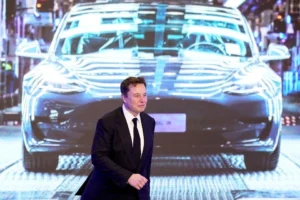Elon Musk, Tesla’s CEO, recently pointed out the strong position of Chinese car makers. He believes that without trade limits, they could lead globally.
In a Tesla earnings talk, Musk commended the Chinese car industry’s edge.
He saw their global success as possible, depending on trade rules. Without these barriers, he noted, Chinese manufacturers could dominate globally.
Musk mentioned Tesla’s limited interest in partnering with these companies.
However, he is open to sharing Tesla’s charging network and technology for eco-friendly energy progress.
Tesla faces tough competition from Chinese firms, especially BYD.
BYD has outdone Tesla in sales, with a record-breaking number of new energy vehicles sold last quarter.

As competition grows and regulatory hurdles in China increase, Tesla has cut prices. These cuts have been made in China and Europe, affecting profits.
Despite competition, Musk thanked Tesla’s suppliers like Panasonic, CATL, LG, and BYD.
BYD, although a rival, is also a crucial supplier. Tesla aims to boost orders from these suppliers in 2024, showing cooperation continues amidst market challenges.
Background
Trade barriers impact China’s global market reach across various economic regions, each with unique challenges.
1. United States: Tariffs and investment scrutiny increase costs and complicate Chinese automotive entries due to trade disputes and security concerns.
2. European Union: Anti-dumping measures and environmental and safety regulations demand significant adaptation by Chinese automakers.
3. India: High import tariffs and investment restrictions signal a protective stance, affecting Chinese automotive market access.
4. Japan and South Korea: Strong domestic industries and brand loyalty set high standards for quality and technology for Chinese cars.
5. ASEAN Countries: Despite free trade agreements, non-tariff barriers and protection of local industries pose challenges for Chinese exports.
Navigating these barriers requires China to adapt strategically and comply with local standards and regulations.

